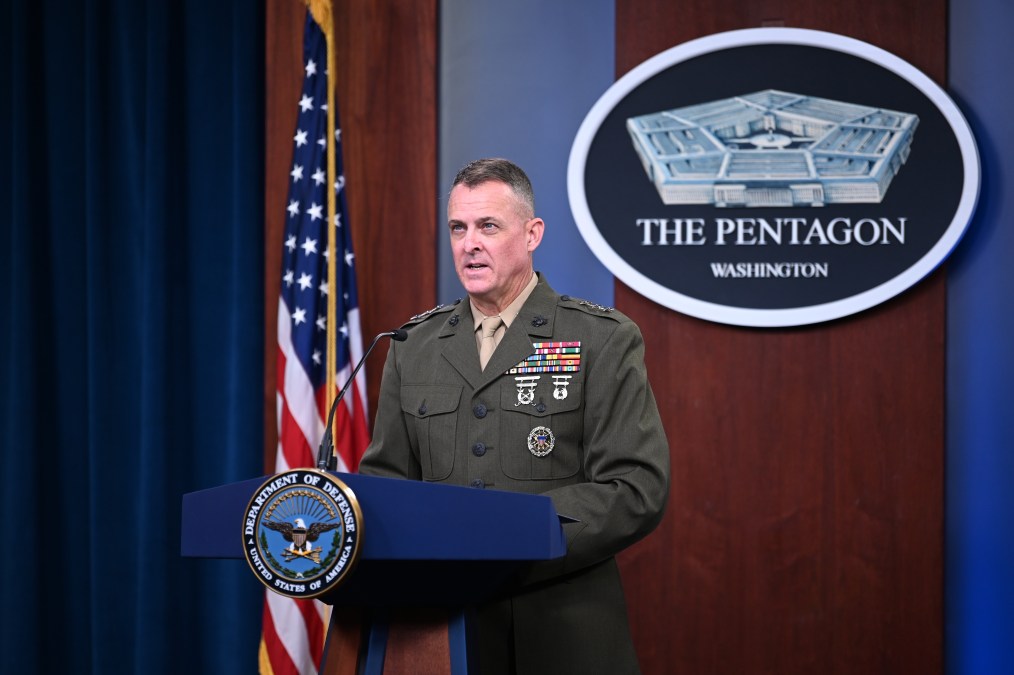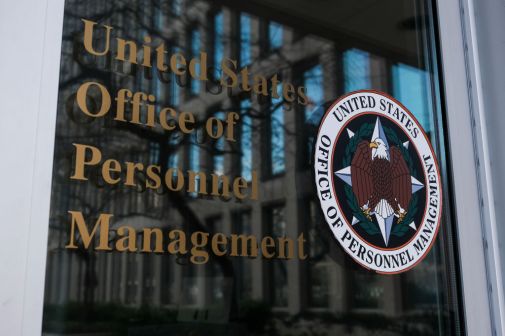JAIC director sees improvement in Pentagon contracting for artificial intelligence capabilities

The Department of Defense is getting better at contracting as the U.S. military accelerates its efforts to integrate artificial intelligence into the force, the director of the Joint Artificial Intelligence Center said Wednesday.
Protecting the government’s intellectual property is one example of an area where improvements have been made, according to Lt. Gen. Michael Groen.
In the past “lots of vendors started to come on board and … [were] charging us a lot of money for things that we, you know, that we didn’t need to be paying for,” he said during a virtual conference hosted by C4ISRNET.
“We have less, but still some, you know, folks in the department who are just giving government data away, right, and then buying it back from a vendor,” he said. “Hey, we’re not doing that shit anymore, right. Like government intellectual property, we know how to protect that … and we’re teaching everybody how to protect that so that we get the benefit.”
Additionally, the JAIC has “pulled together” a number of different contract vehicles such as blanket purchase agreements or other transaction authority agreements (OTAs) where a consortium of vendors bid on projects, he noted.
In the past, the JAIC was “cranking through these investment vehicles” and then working closely with Army Contracting Command to actually implement them.
Now, the JAIC is “very close” to having the ability to implement these contracting vehicles on its own without the assistance of other agencies, he noted.
“We’ve got lots of tools now that are in place,” he said.
OTAs, which are designed to cut through bureaucratic red tape and help the Pentagon pursue new technologies faster, have helped connect the DOD with nontraditional vendors.
“That also helped us open up our environment to small vendors. So, a small vendor with, you know, maybe one small capability … that meets a need that we have in the department. We have the ability now to not just work with big primes, but also work with small companies that maybe don’t have a lot of experience working with the Department of Defense and can’t afford, you know, the overhead that it takes to get into the defense business,” Groen said.
He continued: “We’ve tried to make it really much easier for people with good ideas and good capabilities — small or large companies — to work with us and help us build capabilities. And that’s actually going really, really well.”
In December, the position of chief digital and artificial intelligence officer (CDAO) was created to oversee the JAIC, Defense Digital Service and the Pentagon’s chief data office. In March, the DOD announced the appointment of Sharothi Pikar as deputy chief CDAO for acquisitions. Pikar will oversee the development, acquisition and procurement of capabilities with the department’s industry and academic partners.
“As our acquisition executive gets on board and starts to function in that capacity, we’re going to be able to execute that, you know, even better. And we’ll be able to do it ourselves … with Congress’ approval,” Groen said.
Contracting will be critical as the Pentagon moves to integrate its AI capabilities.
Just a few years ago when the JAIC was first stood up, “we were building sort of demonstration AI projects just to illuminate right across the department, ‘Hey, this is what AI kind of looks like,’” Groen said.
In three years, the Pentagon has moved from AI “discovery” to AI adoption to now focusing on AI integration, he said.
“Now we’re thinking about with every service having, you know, a fairly robust AI capability … that’s under construction,” Groen said.
Each of the services will be pursuing a variety of AI efforts, and they may involve hundreds of projects “whether those are, you know, pure AI plays or if it’s AI integrated into a system or a … platform architecture,” he said.
The DOD needs to be able to “federate capabilities across the enterprise,” the JAIC chief said. To do that, operational data sources will need to cataloged and available so that they can be “stitched” into algorithms.
For example, if somebody in the Navy builds a good AI capability, another DOD agency or component could tap into that catalog and tune it for a different application.
“We need to have that kind of environment where we can share data readily and we can share a platform environment readily. That gives us resilience and … we’d be competitive with anybody when we are operating at that scale,” Groen said.






